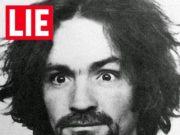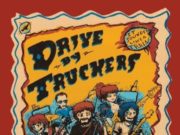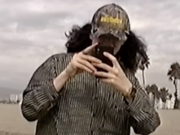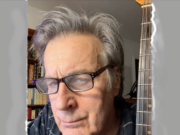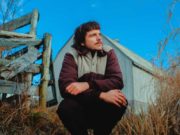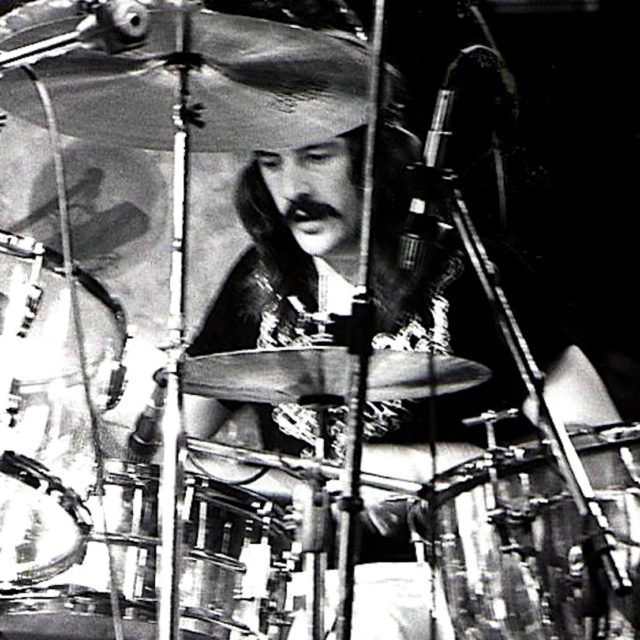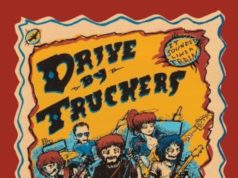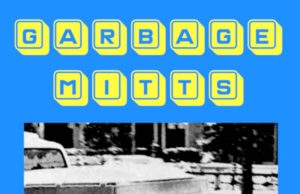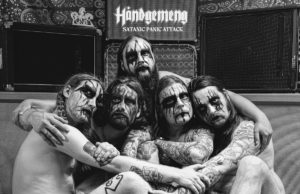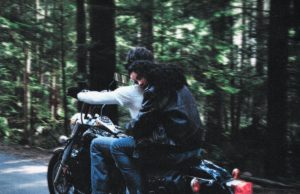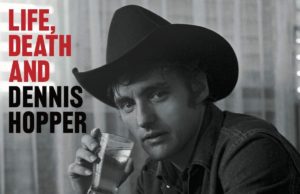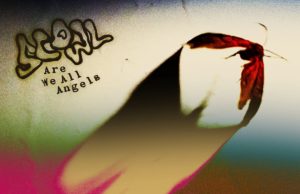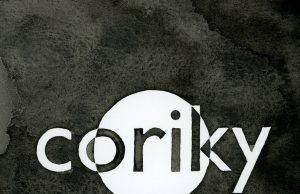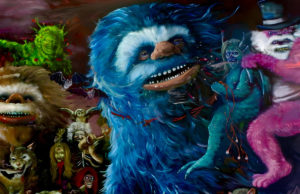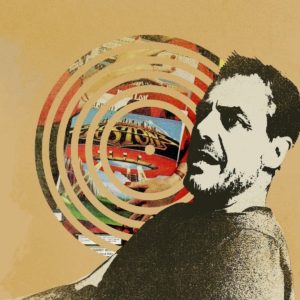 Jimmy Page and John Paul Jones were seasoned session men by the time Led Zeppelin formed in late 1968. Vocalist Robert Plant has had the most successful and prolific solo career of any Zep member since the band’s last studio album in 1979.
Jimmy Page and John Paul Jones were seasoned session men by the time Led Zeppelin formed in late 1968. Vocalist Robert Plant has had the most successful and prolific solo career of any Zep member since the band’s last studio album in 1979.
But drummer John Bonham died from asphyxiation in September, 1980. For him there was no Honeydrippers, no Live Aid, no Them Crooked Vultures, no Coverdale Page or The Firm, no Band of Joy reunion. If you want to find any non-Zeppelin recordings of Bonham, you’re looking at mostly guest appearances made while he was the drummer in the biggest band in the world.
But there are a few exceptions, and some pretty cool examples of his outside work. Let’s start with the early years.
Bonham’s first recording was with the Birmingham group The Senators — their 1964 single She’s A Mod. He was just 16 years old. This is when he decided that “drummer” was going to be his job.
Before Led Zeppelin, both Plant and Bonham were in the progressive folk-blues group Band Of Joy. Originally active from 1966 to 1968, Band Of Joy recorded a few demos in the spring of ’68, but when those failed to get them a record deal, they split up. The songs on the demo were Adriatic Sea View (a pseudo cover of Chuck Berry’s I Got To Find My Baby) and two other covers — Hey Joe and For What It’s Worth. These demos were released by Plant in 2003 on his double compilation Sixty Six To Timbuktu. Also on that album you’ll find Philadelphia Baby by The Crawling Kingsnakes, which was the name of the band Plant and Bonham were in together before Band Of Joy. Bonham isn’t on Philadelphia Baby, though — that’s Phil Collins and Dave Edmunds. The track dates back to 1985 and was first available on the soundtrack for Porky’s Revenge.
The reason Page wanted Bonham as the drummer in his new band was the same reason the drummer was turfed from so many others — he was goddamned loud. Bonzo tuned his drums high and played without dampers, using really big sticks. This means he was also rather difficult to record, back in the days before isolated drums and overdubs. His first recorded session came via new bandmate Jones, who was still working as a producer-arranger in 1968. Jones was working on an album for British singer-songwriter PJ Proby, and ended up using the entire Zeppelin group for some sessions — with Plant providing harmonica, tambourine and backing vocals, rather than lead vocals. Bonham appears on a few tracks on Proby’s 1969 album Three Week Hero, which was recorded in September ’68. The entire group appears on the album-closing medley (you can skip the musically excellent first part due to its gratuitous use of the n-word), and you can hear Page, Jones and Bonham on Empty Bottles and Today I Killed A Man.
They also appear on the 1969 single Hanging From Your Lovin’ Tree, and on the B-side of the 1968 single The Day That Lorraine Came Down — a track called Mery Hopkins Never Had Days Like These. You won’t find this on Spotify.
Jones also arranged the album A Way Of Life by The Family Dogg. The 1969 record was the brainchild of singer-songwriter Steve Rowland. Page and Bonham were also on this, as well as singer-songwriter Jim Sullivan, whose own 1969 album UFO has a cult following. Sullivan disappeared in 1975. Singer-songwriter Albert Hammond (I’m A Train, It Never Rains In Southern California) is on the record, too and there are unconfirmed reports Elton John plays piano on the title track.
If it’s true, an even earlier appearance by Bonham might just be on the title track of Donovan’s 1968 album The Hurdy Gurdy Man. But nobody can agree as to whether the drummer is Clem Cattini, Bonham or both. The 1992 CD booklet lists them both, while Jones — who arranged it and plays bass — has said it was Cattini. For his part, Cattini has also said the track features him alone. Donovan’s autobiography suggests it was Bonham and Cattini, but in later interviews he claims to not remember. I’ll include it in the playlist, but to me, it doesn’t sound like Bonzo.
You won’t find any extracurricular Bonham until the never-ending tour after the release of the debut Zeppelin album. During these tours, in the summer of 1969, Zeppelin wrote and recorded their sophomore album on the road — in hotels, hallways and in any studio they could find. One of those was Mystic Studios in Hollywood. In May 1969, with Whole Lotta Love and What Is And What Should Never Be already basically done at Olympic Studios in London, the band plugged in at Mystic and tackled parts of The Lemon Song, Ramble On, Moby Dick and Bring It On Home.
During these sessions, Page and Bonham were also lured to participate in recordings for David “Screaming Lord” Sutch — a British singer and outsider politician. Bonham was actually a fan. He and Page are on several songs of what became the album Lord Sutch and Heavy Friends, which came out in 1970 and claims to have been “produced” by Page, who says he was cornered by Sutch after a Zeppelin gig and basically tricked into making an album with the not-so-talented Sutch.
The album was pulled together from the Mystic sessions featuring Page, Bonham and Jimi Hendrix Experience bassist Noel Redding, and later sessions at Olympic Studios in London featuring Jeff Beck. Bonham plays on seven of the album’s 12 tracks — Wailing Sounds, Cause I Love You, Flashing Lights, Thumping Beat, Brightest Light, Union Jack Car and Baby Come Back.
It is a fascinating, but absolutely awful record. The best thing about the album, from a historical point of view, is it gave Page hands-on experience at Mystic, allowing him to get the best-possible sounds for Led Zeppelin II, in a short amount of time. I reviewed the album HERE in June 2023. Here’s what I said about the Bonham tracks:
“Wailing Sounds is clearly a first take — at least the drums are because it kind of falls off the beat at one point. The mix is not great — the kick is way off to the left and the horrid incomprehensible vocals are dead-centre. This track — like all the Page/Bonham ones — sounds great LOUD. Cause I Love You is a ripoff of All Day And All Of The Night, except there’s no question you’re listening to Page. I really like Flashing Lights, the third song. The mix is quite good too. Page’s slide guitar is reminiscent of Travelling Riverside Blues, probably because Zeppelin recorded it just a few weeks later at the BBC. The awesome Thumping Beat is basically drunk-teenager lyrics on top of Killing Floor, and Union Jack Car influenced the album’s cover artwork. It’s Reelin’ & Rockin’ with different words. Brightest Light is the album’s sole ballad. On the closer, Baby Come Back, Bonham is very restrained until the chorus comes in and it turns into You Really Got Me. Absolutely thundering on that bit.”
The fun thing for Zeppelin fans is the similarities between Thumping Beat and The Lemon Song, which were basically recorded at the same sessions.
The calendar year 1972 was the first since 1969 with no new Led Zeppelin album. One of the things Bonham got up to was playing drums on the solo album of former Beathovens frontman Jimmy Stevens. The album was called Don’t Freak Me Out in the U.K. and Paid My Dues in North America when it was released a year later. Bonham contributes drums to the title track Don’t Freak Me Out and Is It Me Babe. Maurice Gibb produced the record and also plays bass on it. Guitar duties were handled primarily by a 22-year-old Peter Frampton.
When Led Zeppelin II — aka The Brown Bomber — came out, everything changed. Zeppelin took over from The Beatles as the biggest band in the world. As such, opportunities for guest appearances were few and far between. While he occasionally made drunken live cameos, Bonham didn’t get behind the drums for non-Zeppelin studio sessions again until October 1975. He was pretty friendly with Paul and Linda McCartney, who asked him to help flesh out the Wings track Beware My Love while regular drummer Joe English was in the States for family reasons. McCartney finally released the Bonham demo version of the song in a 2014 deluxe box set reissue of Speed Of Sound.
A demo version of C Moon from 1972 is rumoured to exist as well, featuring Bonham on drums. If it exists, Macca has not opted to release it. It supposedly came about when, like English years later, Wings drummer Denny Seiwell was unavailable. Wings guitarist Denny Laine was friends with Bonham. The pair are both from Birmingham, which is likely how Bonzo got asked to fill in for the demo session. And just like in 1976, Paul was uncomfortable using an outside drummer on a Wings track. In this case, they didn’t wait for Seiwell’s return, though — lead guitarist Henry McCullogh is the drummer on the track.
This wasn’t the last time Bonham would work with McCartney. When Paul was putting together what would eventually be the final Wings album, Back To The Egg, in 1979. McCartney hatched a plan to put together an all-star ensemble called The Rockestra. The group featured the members of Wings, plus Bonham and Jones from Led Zeppelin, David Gilmour from Pink Floyd, Pete Townshend from The Who, James Honeyman-Scott of The Pretenders, Hank Marvin of The Shadows, Gary Brooker of Procol Harum, Ronnie Lane of The Faces, and Bruce Thomas of The Attractions.
Keith Moon was initially supposed to be part of The Rockestra, but died less than a month earlier, after a night spent in the company of McCartney watching a preview of The Buddy Holly Story. Moon had been drinking, despite the fact that he was taking the anti-withdrawal drug Heminevrin. So, instead of Moon, Kenney Jones of The Faces was invited to the Oct. 3 session. Townshend asked Jones to join The Who three weeks later.
The Rockestra performs two songs on Back To The Egg — the Grammy-winning Rockestra Theme instrumental, and So Glad To See You Here. The session, donae at Abbey Road, was filmed and used in a 40-minute documentary.
A year after the Rockestra session at Abbey Road, and seven months after Back To The Egg was released, Bonham reprised his role in the supergroup to perform the closing set of songs on the final night of the Concerts For The People of Kampuchea series at the Hammersmith Odeon in London. On Dec. 29, The Rockestra performed a medley — featuring Rockestra Theme, Let It Be and Lucille — to close the night, after a 20-song set by Wings. A double album featuring songs by 10 of the concert series performers — Queen, The Pretenders, The Who, Elvis Costello & The Attractions, Rockpile (with Robert Plant), The Specials, Ian Dury & The Blockheads, The Clash, Wings and Rockestra — came out at the end of March 1981, six months after Bonham died. It isn’t on Spotify, has never been re-issued and wasn’t ever even pressed on CD.
Another of Bonham’s fellow Birmingham mates was Roy Wood, who broke out with The Move, which transformed into Electric Light Orchestra before Wood quit in mid-1972 and formed Wizzard. His career was in the weeds by the end of the 1970s. Warner Brothers managed to coax a third solo album out of him in 1979 called On The Road Again, which features Bonham. It was Wood’s first solo album since 1975’s Mustard, and his last before 1987’s Starting Up. Wood, a multi-instrumentalist, actually handles most of the drumming himself. The only song with Bonham as the drummer is Keep Your Hands On The Wheel. While the album came out in 1979, it was pieced together from sessions at seven different studios. I suspect the Bonham contributions date back to 1977, when Zeppelin were on hiatus following the death of Plant’s son.
• • •
Area Resident is an Ottawa-based journalist, recording artist, music collector and re-seller. Hear (and buy) his music on Bandcamp, email him HERE, follow him on Instagram and check him out on Discogs.





